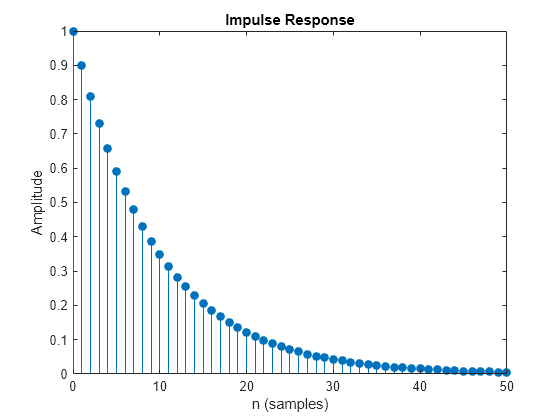Impulse Response
The impulse response of a digital filter is the output arising from the unit impulse sequence defined as
You can generate an impulse sequence a number of ways; one straightforward way is
imp = [1; zeros(50,1)];
The impulse response of the simple filter with and is , which decays exponentially.
b = 1; a = [1 -0.9]; h = filter(b,a,imp); stem(0:50,h)

A simple way to display the impulse response is with the impz function.
impz(b,a,51)
